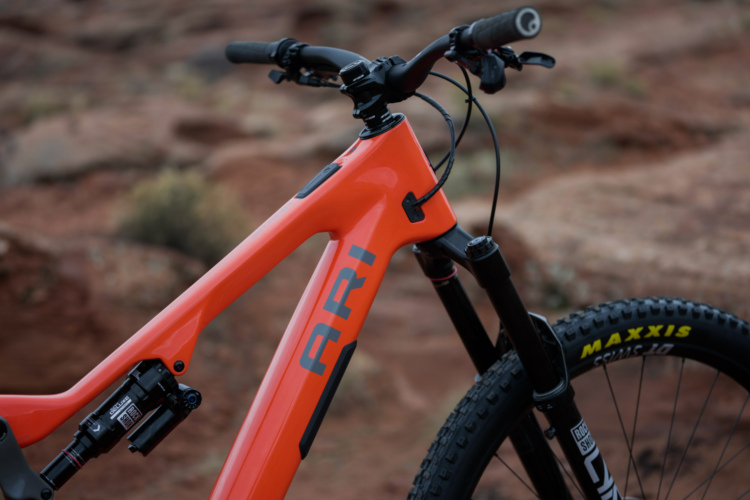
The Stoke is an occasional opinion series highlighting the things that get us stoked about mountain biking. 🤘 👍 👏 🙏
In 1992 the Atlanta Braves were in the Major League Baseball (MLB) World Series against the Toronto Blue Jays, and somehow my Dad scored a couple tickets from his company to game two. My brother and I were huge baseball fans at the time, so Dad generously gave us the two tickets and dropped us off at the game. As a middle schooler, it felt so exciting just to be there for what was, in my mind, such a momentous occasion of seemingly global importance. Unfortunately the Braves went on to lose that game, and eventually the series, but we didn’t care. For a few short hours, it felt incredible to be so close to the best of the best, and among tens of thousands of others who shared our passion for baseball.
While the 1992 “World” Series happened to feature teams from the US and Canada, currently only one of 30 MLB teams is located outside of the US. And it’s the Jays. Perhaps calling it the WORLD Series is a bit of a stretch. According to the Chicago Tribune, North American MLB baseball teams were worth a collective $66B in 2021, about the same size as the truly global bicycle industry in 2019.
In 2013, another World Series was launched, but this one actually included an international roster of the best athletes competing on trails in Italy, France, the US, and Canada. The Enduro World Series may have borrowed part of its moniker from another sport, but unlike the World Series of baseball, it’s a legitimately worldwide competition. Even as far back as the 1890s, the UCI was promoting World Championship bicycle races; today, World Cup mountain bike racing unites fans all around the planet year after year.
Mountain bikers are no doubt familiar with cross-country (XCO) and downhill racing (DHI), though perhaps less familiar with Mountain Bike Eliminator (XCE), another UCI-sanctioned MTB discipline. In 2018 I drove about 100 miles from Atlanta to Columbus, Georgia to watch a World Cup XCE race in the sweltering June heat. Athletes in colorful jerseys, many speaking Dutch, Spanish, and German, milled about the normally sleepy downtown area ahead of the races. These are my people, I thought. In contrast, in that same moment the somewhat confused looking Americans who happened to be walking through downtown for Sunday brunch were the ones who appeared completely foreign and out of place.
For most sports, global competition is a once-every-four-years type of thing. Bringing international athletes together for an event like the Olympics or FIFA World Cup is obviously a huge undertaking so it’s done infrequently, and with great fanfare. Contrast that with cycling where we’ve collectively decided that yes, it’s a pain in the ass for everyone in the world to get together in one place to compete, but by golly we’re going to make it happen every year. And we’re not just going to bring everyone together in one city like the Olympics; we’re going to move the races from country to country every few weeks to involve as many global fans as possible too.
(Allow me to pause the stokefest for a moment and acknowledge that global cycling competition is not without its inequities and negative consequences, particularly when it comes to financial and environmental considerations. The system is not perfect by any means, but in my opinion it does seem to be rooted in mostly positive notions.)
Last month I found myself feeling like that middle schooler all over again, this time at the World Cup mountain bike races in Snowshoe, West Virginia. As we slowly rolled our rented “dad wagon” minivan toward the mountaintop village ahead of the short track XC competition, we spotted several of the pros warming up along the narrow road. “I think that’s Sina Frei!” Then, “Is that Jenny Rissveds?” We were feeling the stoke.
It’s hard to describe the energy of a World Cup mountain bike race, and really the entire weekend surrounding the events. Ahead of the races, there’s nervous energy, followed by excitement, then triumph and celebration, and finally relief. Even as a fan, to be standing so close to the best of the best in the world — not just your city, or state, or country — is a truly amazing feeling. It’s inspiring, and unifying, and incredibly gratifying just to breathe the same air as fellow mountain bikers from around the world, even more so in the time of a worrisome airborne virus that has isolated and divided us in so many ways for the past two seasons.
Over the course of the weekend I cheered shoulder-to-shoulder with mountain bike friends and family from around the world, shared peach-flavored moonshine from a mason jar with race support staff from France, and snapped photos of athletes giving it their all and wearing their national colors with pride. We chatted with mechanics in the pits about their pets back home and offered congratulations to racers as they walked their bikes away from the finish line after the races. In short, it felt like we were all one big global family, reconnecting and celebrating after being apart for a season, and looking forward to next year when we would be together again.
World Cup and EWS race standings and results are certainly important to athletes and brands, and to many of the fans as well. In the end though, the racing seems like it’s mostly just an excuse for all of us to get together, to share our common love for mountain biking, and to inspire one another to keep spreading the stoke.




















0 Comments